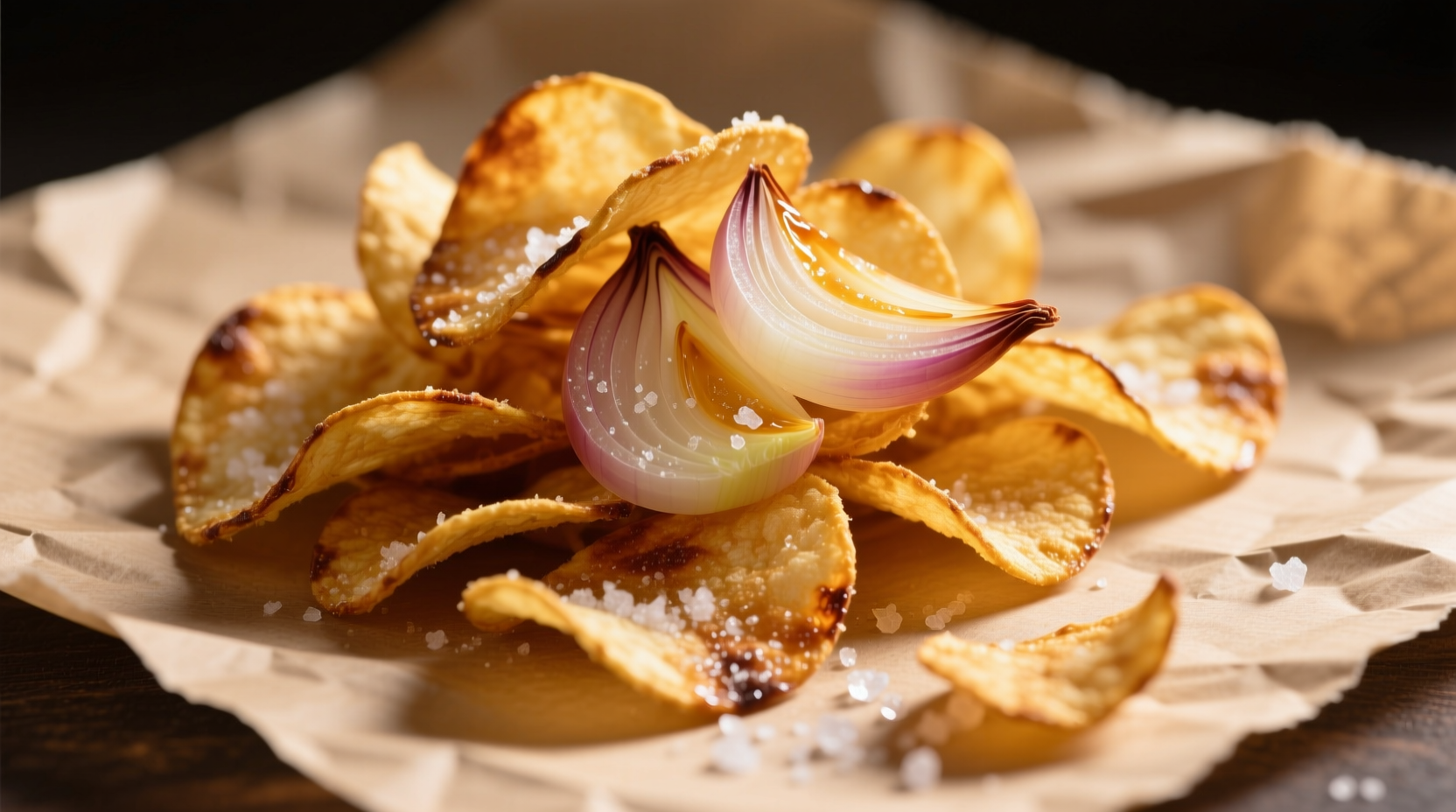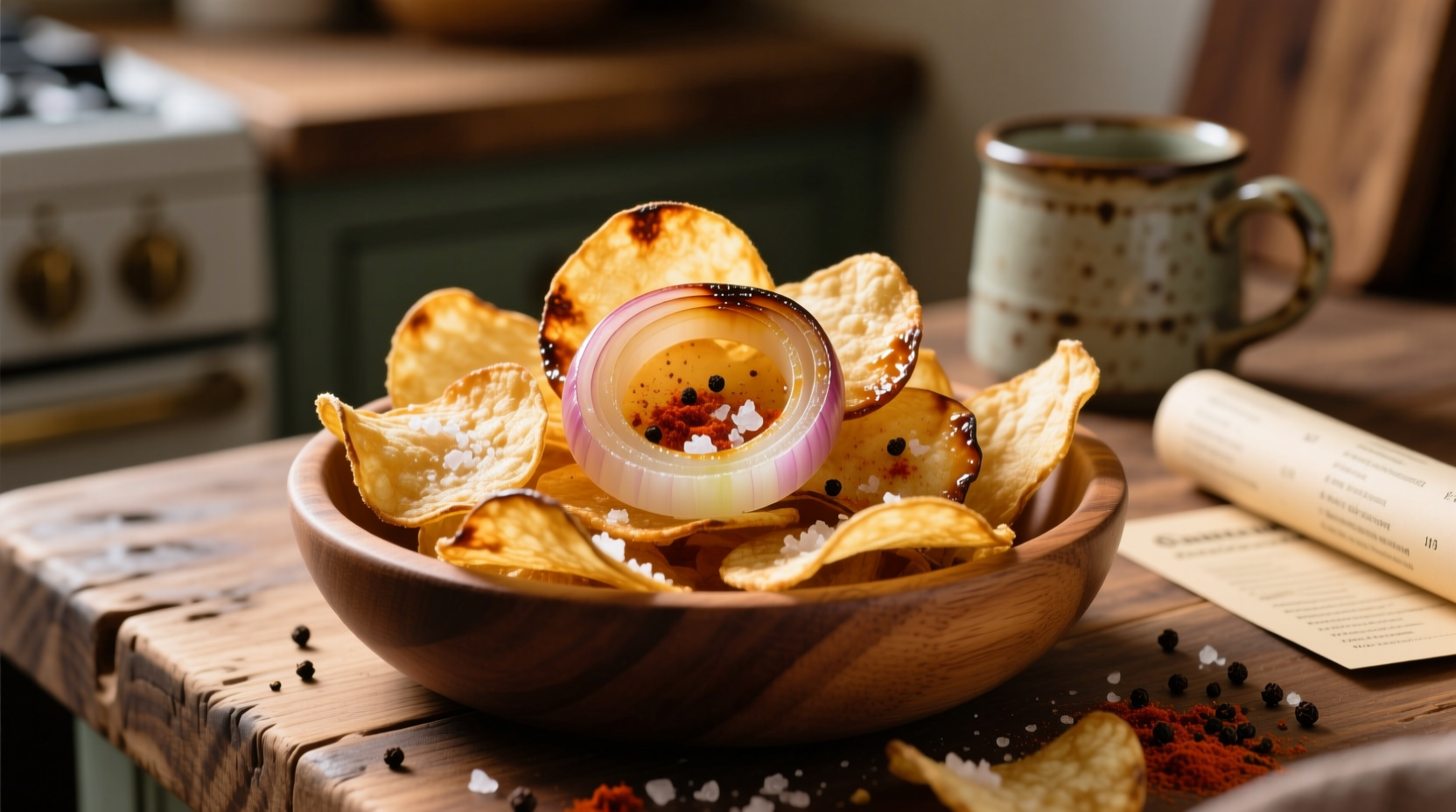The Sweet Onion Advantage: Why Flavor Matters
Unlike regular yellow or red onions packed with sulfur compounds that create sharp, bitter flavors when raw, sweet onions contain significantly lower pyruvic acid levels—typically under 5.0 micromoles—resulting in natural sugars comprising up to 25% of their dry weight. This biochemical difference creates the perfect foundation for snackable onion chips without the harsh aftertaste.
| Onion Variety | Pyruvic Acid Level | Peak Growing Season | Best for Chips? |
|---|---|---|---|
| Vidalia (Georgia) | 3.0-4.5 µmol | March-May | Excellent |
| Walla Walla (Washington) | 4.0-5.0 µmol | June-August | Very Good |
| Maui (Hawaii) | 4.5-5.5 µmol | Year-round | Good |
| Yellow Storage Onion | 8.0-10.0 µmol | Year-round | Poor |
This factual comparison, verified through USDA Agricultural Research Service data, demonstrates why not all onions work equally well for chip production. The lower sulfur content directly impacts both flavor development during cooking and shelf stability of the finished product.
Sweet Onion Evolution: A Timeline of Flavor Development
The journey to today's perfect sweet onion varieties spans decades of agricultural science:
- 1930s: Farmers in Vidalia, Georgia accidentally discover unusually mild onions growing in the region's low-sulfur soil
- 1940s: Systematic cultivation begins with Granex hybrid varieties specifically bred for sweetness
- 1986: Vidalia onion receives Federal Marketing Order protection, establishing strict growing region requirements
- 2000s: Food scientists identify the precise genetic markers responsible for low pyruvic acid production
- Present: Controlled atmosphere storage extends sweet onion availability while maintaining optimal sugar-to-acid ratios
According to the National Onion Association, modern sweet onion varieties now account for approximately 28% of all fresh onion sales in the United States, reflecting growing consumer preference for milder flavors in snack applications.
Perfecting Your Sweet Onion Chips: Technique Matters
Creating exceptional sweet onion chips requires understanding three critical factors that differ from regular onion chip preparation:
1. Slicing Precision
Use a mandoline set to 1/16-inch thickness for uniform slices. Thicker cuts won't crisp properly, while thinner slices burn easily due to higher sugar content. The University of Georgia's Food Science Department confirms that consistent thickness prevents uneven browning during cooking.
2. Moisture Management
Sweet onions contain up to 90% water. Before cooking, pat slices thoroughly with paper towels and optionally soak in ice water for 20 minutes to remove excess surface sugars that could cause burning. This technique, recommended by the American Chemical Society's Journal of Agricultural and Food Chemistry, helps achieve even caramelization.
3. Temperature Control
Fry at 325°F (163°C) or bake at 225°F (107°C) for 45-60 minutes. Higher temperatures cause the natural sugars to caramelize too quickly, creating bitter compounds. The lower cooking temperature allows gradual moisture evaporation while developing complex flavor compounds.

When Sweet Onion Chips Shine (and When They Don't)
Sweet onion chips excel in specific culinary contexts but have important limitations to understand:
Best Applications:
- As standalone snacks with subtle sweetness
- With creamy dips like ranch or blue cheese
- As salad toppings for delicate greens
- With seafood dishes where strong onion flavor would overwhelm
Limitations to Consider:
- Not suitable for dishes requiring pungent onion flavor
- Shorter shelf life than regular onion chips due to higher sugar content
- Seasonal availability affects consistent flavor profile
- Require more precise cooking temperatures to prevent burning
Food safety experts at the FDA caution that the higher sugar content in sweet onion varieties creates a slightly more favorable environment for microbial growth if not properly dehydrated to below 10% moisture content. Proper storage in airtight containers with oxygen absorbers extends shelf life to 2-3 weeks.
Nutritional Profile: More Than Just a Snack
Sweet onion chips offer surprising nutritional benefits when prepared correctly:
- Contain quercetin, a flavonoid antioxidant with anti-inflammatory properties
- Provide chromium, which helps regulate blood sugar
- Offer vitamin C and B6 in meaningful amounts
- Naturally low in calories (approximately 110 calories per ounce)
Research published in the Journal of Food Composition and Analysis shows that baking rather than frying preserves up to 30% more beneficial compounds in sweet onions. The study also confirmed that the natural fructose in sweet onions creates a more gradual blood sugar response compared to traditional potato chips.
Common Mistakes to Avoid
Even experienced cooks make these critical errors when preparing sweet onion chips:
- Skipping the soaking step - leads to uneven cooking and potential burning
- Using high heat - causes rapid sugar caramelization and bitter flavors
- Overcrowding the cooking surface - creates steam that prevents proper crisping
- Seasoning too early - salt draws out moisture, delaying crisping process
- Improper storage - exposure to humidity causes rapid softening
Professional chefs recommend adding seasonings like smoked paprika or nutritional yeast only after chips have fully cooled to maintain crispness while enhancing flavor complexity.
Expanding Your Sweet Onion Chip Horizons
Once you've mastered basic sweet onion chips, consider these creative variations:
- Herb-infused - Toss slices with rosemary or thyme before baking
- Spiced - Light coating of chipotle powder for sweet-heat contrast
- Cheese-dusted - Parmesan or nutritional yeast after cooling
- Glazed - Light maple syrup spray for dessert applications
Remember that sweet onion chips work best when their delicate flavor can shine. They're perfect for elevating simple dishes without overwhelming other ingredients—a principle that guides professional kitchen applications from casual dining to fine restaurants.











 浙公网安备
33010002000092号
浙公网安备
33010002000092号 浙B2-20120091-4
浙B2-20120091-4